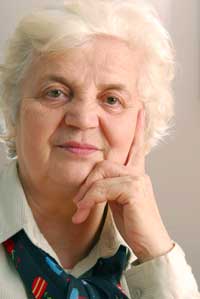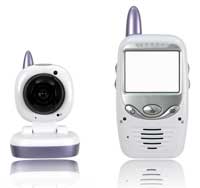 If your loved one’s speech is impaired,
the physician or therapist may have used the terms dysphonia, dysarthria or apraxia. These conditions may occur alone or together, and often result from a stroke. Each of these conditions affects speech in different
ways.
If your loved one’s speech is impaired,
the physician or therapist may have used the terms dysphonia, dysarthria or apraxia. These conditions may occur alone or together, and often result from a stroke. Each of these conditions affects speech in different
ways.
Dysphonia affects voice quality, making the person’s speech sound whispery, hoarse, raspy or a different pitch than before. In conditions such as MS, dysphonia means that the person has trouble controlling loudness. The person may speak too softly to be heard or more loudly than is appropriate.
Dysarthria is caused by a weakness of the muscles of the respiratory system, throat, palate, lips and tongue. These muscles may move slowly, become weak or totally paralyzed. As a result, speech may be slurred, soft, slow, rapid but mumbling, nasal, hoarse or have an unusual rhythm. In addition, the person may have a tendency to drool and have difficulty eating and swallowing. Dysarthia is common in ALS, and becomes more severe as the disease progresses.
 Individuals with dysarthria
and dysphonia can be encouraged to adjust the way they speak in order to improve their ability to communicate successfully to others. These adjustments include
Individuals with dysarthria
and dysphonia can be encouraged to adjust the way they speak in order to improve their ability to communicate successfully to others. These adjustments include
- Ensuring that they have the listener’s attention before speaking.
- Introducing the topic of their message with a word or phrase so the listener can listen for related words. People do not need to understand every word in order to follow a person’s conversation as long as they catch key words. Emphasize the most important words in the message.
- Watching the listener for signs of understanding or of confusion, and repeating or rephrasing elements that were missed.
- Speaking slowly and reasonably loudly, as well as pausing frequently to exert breath control. To help control the rate of speech, the person can tap a finger once for each syllable.
- Taking a breath before each phrase and starting to speak as they breathe out.
- Exaggerating movements of the tongue, lips and jaw while speaking. Individuals should think about where the tongue, lips and jaw must go before trying to pronounce difficult sounds.
- Substituting words that are easy to say for those that are more difficult, or breaking up longer words into smaller segments.
- Opening the mouth wider to produce louder speech.Varying pitch and loudness intentionally to make speech sound less monotone.
Some additional helpful strategies are listed below.
- Limit conversations when tired.
- Carry a pencil and small notepad or a small card with the alphabet on it to substitute print for speech when necessary.
- Reduce background noise so soft speech can be heard.
- Communicate face-to-face to facilitate lip reading as an adjunct to listening.
- Add gestures and facial expression to help listeners understand.
 If dysarthria is severe, assistive technology
may be needed to meet daily communication needs. Usually an assessment is done when the person’s speech rate drops to 125 – 150 words per minute and only 90% of the words are intelligible.
If dysarthria is severe, assistive technology
may be needed to meet daily communication needs. Usually an assessment is done when the person’s speech rate drops to 125 – 150 words per minute and only 90% of the words are intelligible.
Technology for augmentative and alternative communication (AAC) can be as simple as a board divided into sections containing the alphabet and a functional vocabulary that the person points to in order to communicate. Or it can be as complex as a communication device with a keyboard controlled by touch, a pointer mounted on the head or by eye movements. Physicist Stephen Hawking, who has ALS, is a famous user of this type of device.
 Apraxia affects the brain’s ability to coordinate
the order and timing of speech. People with speech apraxia have trouble sequencing sounds in syllables and words. They know the words they want to say, but their brains have difficulty coordinating the muscle movements necessary to
say those words. The result is something completely different - even made up words. For example, a person may try to say “kitchen,” but it may come out “bipen.” The person may recognize the error and try again - sometimes getting it
right, sometimes not.
Apraxia affects the brain’s ability to coordinate
the order and timing of speech. People with speech apraxia have trouble sequencing sounds in syllables and words. They know the words they want to say, but their brains have difficulty coordinating the muscle movements necessary to
say those words. The result is something completely different - even made up words. For example, a person may try to say “kitchen,” but it may come out “bipen.” The person may recognize the error and try again - sometimes getting it
right, sometimes not.
Symptoms of speech apraxia include:
- Difficulty imitating speech sounds
- Difficulty putting sounds and syllables in the right order
- Difficulty producing longer and more complex words
- Groping for sounds
- Inconsistent errors
- Slow rate of speech
- An inability to produce sound (in severe cases).
The severity of the communication impairment depends on the extent and location of the damage in the brain. People with apraxia may recover speech functions on their own. Speech-language pathologists use a variety of therapeutic approaches, as there is no one therapy that works for everyone. In severe cases, people may need to use other ways to express themselves, including formal or informal sign language, a communication book with pictures or written words that the person can show to others, or an electronic communication device such as a portable computer that writes and produces speech.
 A person
with these types of speech disorders may have difficulty calling for help. This may be especially important in the initial stages of disability, or in the later stages of a progressive disability, such as ALS. In these circumstances,
a signalling device or system is required.
A person
with these types of speech disorders may have difficulty calling for help. This may be especially important in the initial stages of disability, or in the later stages of a progressive disability, such as ALS. In these circumstances,
a signalling device or system is required.
You may need some kind of call bell to alert a caregiver who is elsewhere in the home. A baby monitor is quite reliable; simply put the transmitter in the person’s room and carry the receiver with you. However, some people do not like using a baby monitor because it does not afford privacy and does not permit two-way communication. A wireless doorbell is another option. You carry the receiver which rings when the doorbell is pressed. This works throughout most homes, but not generally outside. If your loved one cannot speak or make a noise to alert you, use a buzzer box and an Ability Switch that they can activate. The challenge with these devices is that your loved one does not know if the device worked until you enter the room.